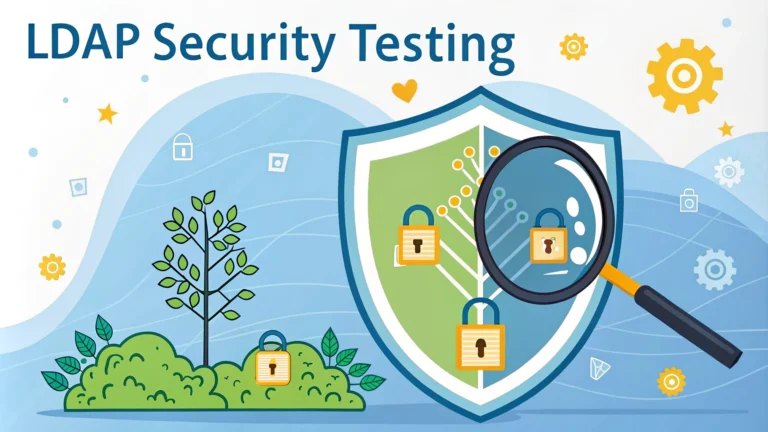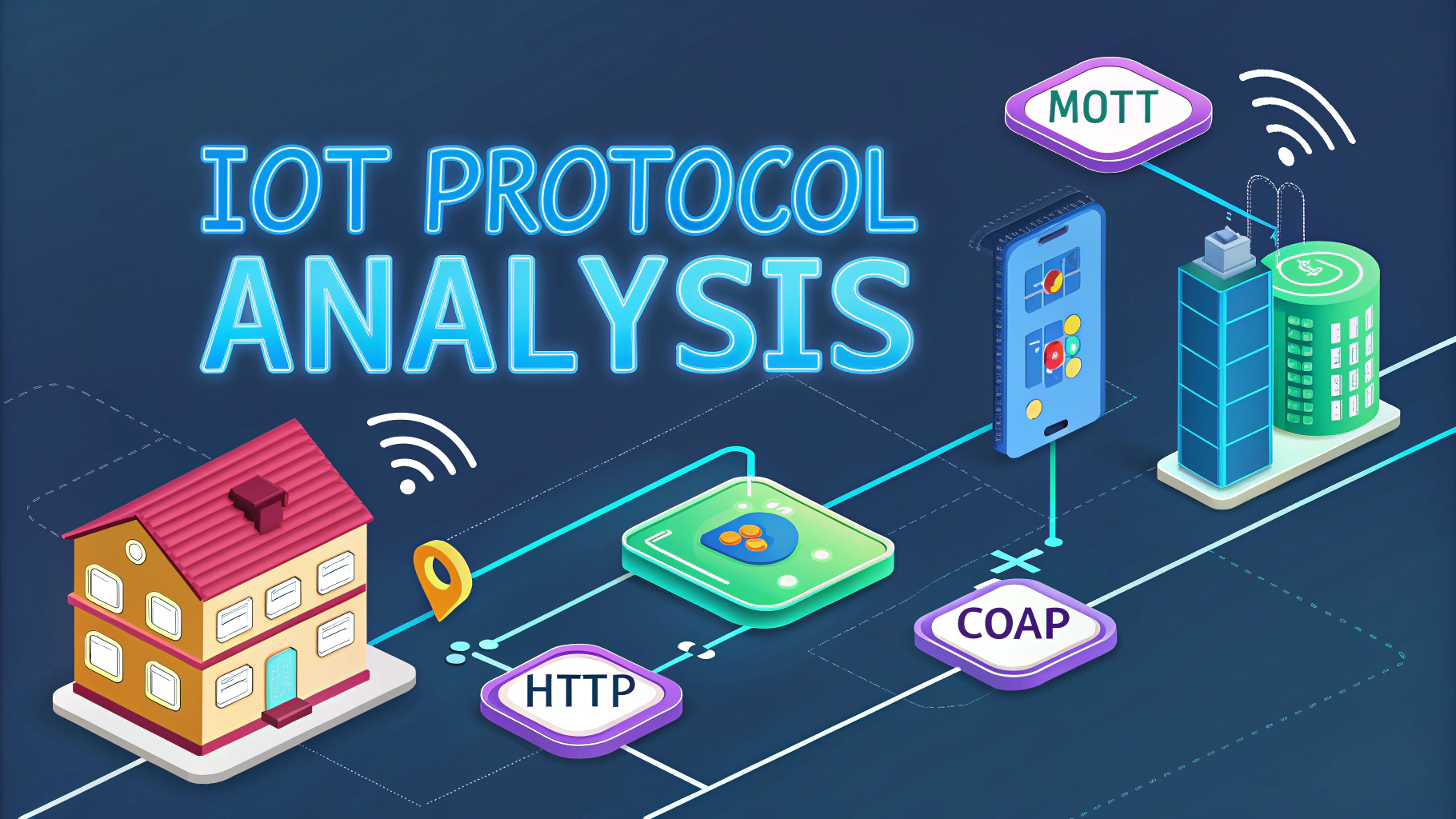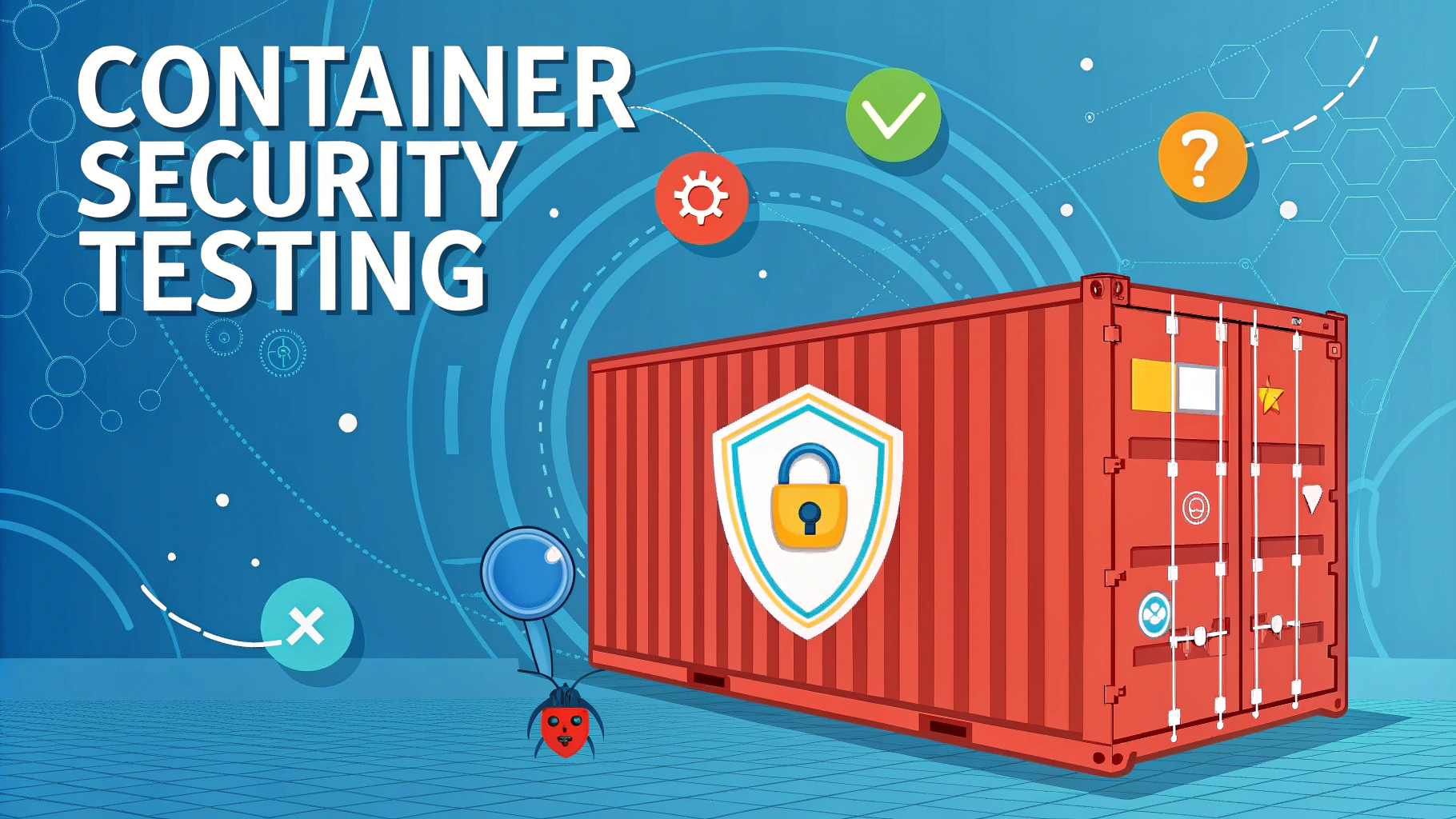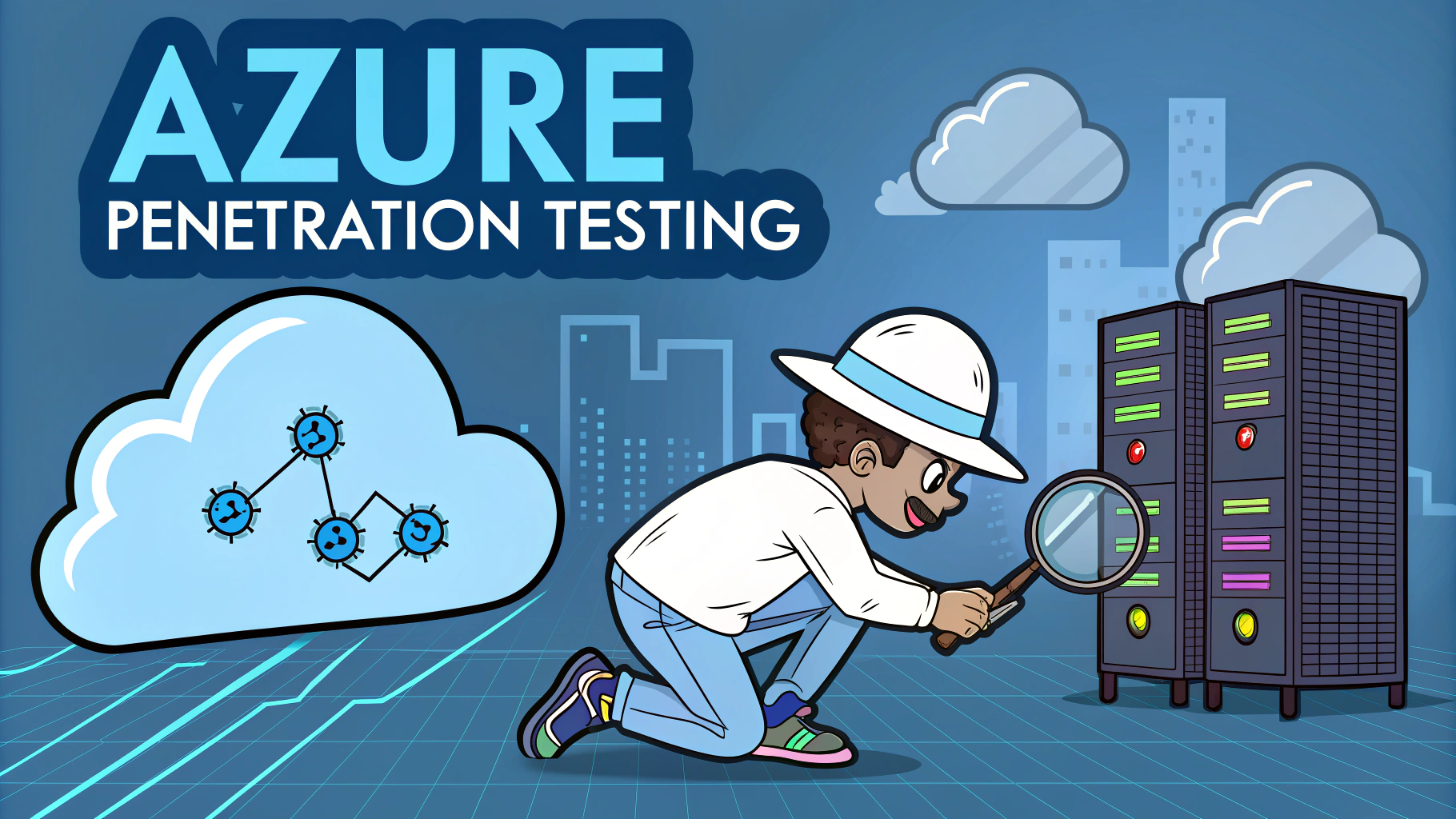LDAP (Lightweight Directory Access Protocol) penetration testing identifies security weaknesses in directory services that could expose sensitive organizational data.
Essential LDAP Security Checks
A methodical LDAP security assessment should examine authentication mechanisms, access controls, and data encryption.
Initial Reconnaissance
- Port scanning (typically port 389 for LDAP, 636 for LDAPS)
- Service version identification
- Directory information tree enumeration
- Anonymous binding attempts
Common Attack Vectors
- Null bind attempts
- Directory information harvesting
- Brute force attacks against user accounts
- Man-in-the-middle attacks on unencrypted connections
Testing Tools
- LDAPSearch: Basic enumeration and connection testing
- JXplorer: GUI-based LDAP browser and editor
- LDAP Administrator: Advanced directory management tool
- Nmap with NSE scripts: Automated LDAP security scanning
Security Checks Checklist
| Check | Description |
|---|---|
| SSL/TLS Implementation | Verify encrypted communications are properly configured |
| Password Policies | Check password complexity and storage methods |
| Access Controls | Validate ACL effectiveness and proper implementation |
| Authentication Methods | Test strength of authentication mechanisms |
Remediation Steps
- Implement LDAPS (LDAP over SSL/TLS)
- Disable anonymous binds
- Use strong password policies
- Implement proper access controls
- Regular security patches and updates
- Monitor LDAP traffic for unusual patterns
Contact your directory service vendor’s security team for specific security guidelines and best practices.
Reporting Format
- Document discovered vulnerabilities
- Include risk levels and potential impact
- Provide clear remediation steps
- Add technical details for implementation
Security testing should be performed regularly as part of ongoing security maintenance.
For emergency LDAP security issues, contact the Internet Security Response Team at cert@cert.org or your local CERT coordination center.
Advanced LDAP Testing Techniques
Schema Analysis
- Evaluate attribute definitions
- Check for custom schema elements
- Identify sensitive data storage patterns
- Validate object class inheritance
Performance Testing
- Connection pool stress testing
- Query response time analysis
- Replication lag measurement
- Load balancing verification
Compliance Considerations
Regulatory Requirements
- GDPR data protection measures
- HIPAA security controls
- PCI-DSS compliance checks
- SOX audit requirements
Documentation Requirements
| Document Type | Required Content |
|---|---|
| Test Results | Detailed findings and evidence |
| Compliance Reports | Regulatory alignment status |
| Remediation Plans | Timeline and resource requirements |
Conclusion
Effective LDAP penetration testing requires a comprehensive approach combining technical expertise, proper tooling, and methodical documentation. Regular assessments help maintain directory service security and ensure compliance with regulatory requirements.
Organizations should:
- Maintain updated security testing procedures
- Implement continuous monitoring solutions
- Keep security documentation current
- Train staff on security best practices
- Review and update security controls regularly
Remember to balance security measures with operational requirements while maintaining directory service availability and performance.
FAQs
- What is LDAP security testing and why is it important?
LDAP security testing is the process of evaluating Lightweight Directory Access Protocol implementations for vulnerabilities and security weaknesses. It’s crucial because LDAP servers often store sensitive organizational data like user credentials and employee information. - What are the common vulnerabilities found in LDAP implementations?
Common LDAP vulnerabilities include anonymous bind access, null base searches, information disclosure, weak authentication methods, cleartext password transmission, and insufficient access controls. - What tools are typically used for LDAP penetration testing?
Popular tools include JXplorer, Softerra LDAP Administrator, LDAPSearch, LDAP Account Manager, OpenLDAP utilities, and specialized modules in frameworks like Metasploit. - How can LDAP injection attacks be identified during testing?
LDAP injection can be identified by testing input fields with special characters like (&), (|), (!), (*), and testing for filter bypass scenarios. Automated scanners and manual testing methods can detect these vulnerabilities. - What security controls should be tested in an LDAP assessment?
Key controls to test include authentication mechanisms, authorization controls, encryption of data in transit, password policies, session management, logging mechanisms, and access control lists (ACLs). - How can LDAP brute force attacks be detected during testing?
LDAP brute force attacks can be detected by monitoring failed login attempts, testing password lockout policies, and using tools that attempt multiple authentication attempts with different credentials. - What should be included in LDAP security testing documentation?
Documentation should include discovered vulnerabilities, risk levels, technical details of findings, evidence/proof of concept, impact assessment, and detailed remediation recommendations. - How can SSL/TLS implementation for LDAP be tested?
SSL/TLS testing involves checking certificate validity, supported protocols and cipher suites, proper implementation of LDAPS (LDAP over SSL), and verifying that clear-text LDAP is disabled. - What are the best practices for testing LDAP access controls?
Testing should include verification of principle of least privilege, checking for unauthorized access to objects, testing group membership controls, and validating attribute-level access restrictions. - How can anonymous bind vulnerabilities be identified?
Anonymous bind testing involves attempting connections without credentials, enumerating accessible information, and checking for excessive permissions granted to anonymous users.








